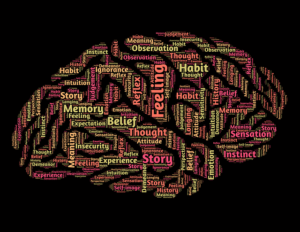Sometimes, life’s complexities can feel like a gentle reminder to slow down. You might find that incorporating mindfulness exercises into your daily routine can serve as a pathway to reduce stress and foster happiness. From deep breathing techniques to mindful eating, each practice offers a unique way to enhance your well-being. But how do these exercises work together to create a more fulfilling life? Exploring these mindfulness strategies could uncover insights that resonate with you on a personal level.
Deep Breathing Techniques
 Have you ever noticed how your breath changes when you’re stressed? You might find yourself taking quick, shallow breaths, which can actually heighten your anxiety. This is where breath awareness becomes essential. By paying attention to how you breathe, you can tap into powerful techniques to calm your mind and body.
Have you ever noticed how your breath changes when you’re stressed? You might find yourself taking quick, shallow breaths, which can actually heighten your anxiety. This is where breath awareness becomes essential. By paying attention to how you breathe, you can tap into powerful techniques to calm your mind and body.
One effective method is diaphragmatic breathing, which involves engaging your diaphragm rather than just your chest. To practice this, sit or lie down comfortably. Place one hand on your chest and the other on your abdomen. As you inhale deeply through your nose, focus on expanding your abdomen. You should feel the hand on your abdomen rise while the one on your chest remains relatively still.
Exhale slowly through your mouth, allowing your abdomen to fall. Repeat this process for a few minutes.
By consciously practicing diaphragmatic breathing, you’re not just reducing stress; you’re also improving oxygen flow and promoting relaxation. This technique can help lower your heart rate and blood pressure, creating a sense of calm.
Whenever life feels overwhelming, remember that taking a moment to engage in breath awareness can make a significant difference.
Body Scan Meditation
Body scan meditation helps you tune into your body and release tension that’s often stored in various areas. This practice encourages you to cultivate body awareness, allowing you to identify where you hold stress or discomfort. By systematically focusing on different parts of your body, you can uncover hidden tension and develop a deeper connection with yourself.
To start, find a comfortable position, either lying down or sitting. Close your eyes if you feel comfortable doing so. Begin by taking a few deep breaths, inhaling through your nose and exhaling through your mouth.
As you breathe, bring your attention to your toes. Notice any sensations or tightness there. Slowly work your way up your body, moving to your feet, ankles, calves, knees, and so on. With each area you focus on, acknowledge any tension and consciously relax that part.
Don’t rush through this process; take your time with each section. If your mind wanders, gently guide it back to the sensations in your body. You’ll likely notice how much tension you’ve been holding onto, and with each breath, you can feel that weight begin to lift.
As you conclude your body scan, take a moment to appreciate the relaxation you’ve cultivated. Regular practice can enhance your overall well-being, making it easier to manage stress and increase happiness in your daily life.
Give yourself permission to feel, breathe, and let go.
Mindful Walking
After taking a moment to connect with your body through body scan meditation, you might find it beneficial to carry that awareness into your movement. Mindful walking is a fantastic way to deepen your mindfulness practice while getting some fresh air and exercise. It’s not just about putting one foot in front of the other; it’s about being fully present in the experience of walking.
Start by finding a quiet space where you can walk without distractions. As you begin, set a mindful pace. This means moving slowly enough to notice each step and the sensations in your body. Feel the ground beneath your feet, the air on your skin, and the rhythm of your breath.
You can treat this as a walking meditation, allowing your thoughts to come and go without judgment. If your mind wanders, gently guide your focus back to your breath or the sensations of walking. Notice how your body moves, the tension that releases, and the calm that envelops you with each step.
As you engage in mindful walking, you’re not just exercising; you’re also nurturing your mental well-being. Embrace this time for yourself. Let go of worries and immerse yourself in the present moment.
Whether you walk alone or with a friend, remember that the goal is to cultivate awareness and connection. Enjoy the journey of each step, and let the world around you unfold at your own mindful pace.
Gratitude Journaling
Gratitude journaling can be a powerful tool for enhancing your mindfulness practice and reducing stress. By taking just a few moments each day to reflect on what you’re thankful for, you can shift your focus from the negative to the positive. This simple yet effective exercise cultivates a mindset of appreciation, helping you navigate life’s challenges with grace.
To get started, set aside a few minutes each day for your gratitude journaling. Find a quiet space where you can reflect without distractions. You might use gratitude prompts to guide your writing, such as, “What made me smile today?” or “What am I proud of?”
These prompts can spark deeper insights and help you recognize the positives in your life that may otherwise go unnoticed.
As you fill your journal with daily reflections, you’ll likely notice a shift in your mood and perspective. You might find yourself feeling lighter, more connected, and more content.
Over time, this practice can help reduce stress levels and enhance your overall happiness.
Guided Imagery
When you’re feeling overwhelmed by stress, guided imagery can serve as a soothing escape. This powerful technique involves using visualization to create calming mental images that transport you to a peaceful place. It’s a simple yet effective way to tap into your imagination and relieve tension.
To practice guided imagery, find a quiet space where you won’t be disturbed. Close your eyes and take a few deep breaths. Begin to visualize a serene environment, like a beach, a forest, or a quiet garden. Imagine the details: the sound of waves, the smell of pine, or the warmth of sunlight on your skin. This mental imagery helps your mind relax and shift focus away from stressors.
You can use various visualization techniques to enhance your experience. For instance, picture yourself walking through your chosen environment. Feel the texture of the ground beneath your feet or the gentle breeze on your face. Engaging your senses deepens the experience and brings your imagination to life.
Guided imagery isn’t just about escaping; it’s a tool to help you manage stress in the moment. With regular practice, it can help you develop a more resilient mindset.
Loving-Kindness Meditation
Although you might feel isolated in your stress, practicing loving-kindness meditation can foster a sense of connection and compassion toward yourself and others. This self-compassion practice encourages you to cultivate feelings of love and kindness, not just for those around you, but also for yourself.
It’s a powerful tool to enhance emotional awareness, helping you recognize and embrace your own feelings without judgment.
To start, find a quiet space where you can sit comfortably. Close your eyes and take a few deep breaths. Begin by silently repeating phrases like, “May I be happy. May I be healthy. May I be safe. May I live with ease.” Allow these words to resonate within you, nurturing feelings of warmth and kindness toward yourself.
This process helps you develop a deeper connection to your own emotional state, making it easier to acknowledge your stress and struggles.
Once you feel a sense of peace, gradually extend these wishes to others. Picture someone you care about and repeat the phrases, wishing them happiness and well-being. You can even expand this practice to include acquaintances and eventually, even those you find challenging.
Through Loving-Kindness Meditation, you’ll notice a shift in your perspective. As you cultivate compassion for yourself and others, you’ll likely experience reduced stress and improved emotional resilience.
Five Senses Exercise
After cultivating compassion through Loving-Kindness Meditation, you might find it helpful to ground yourself in the present moment using the Five Senses Exercise. This practice invites you to reconnect with your immediate environment, using your senses to cultivate awareness and reduce stress.
Start by focusing on your sight awareness. Look around and notice five things you can see. It could be the colors of the walls, the shape of a chair, or the light filtering through a window. Allow your mind to absorb these details without judgment.
Next, shift to sound observation. Listen closely for four distinct sounds. It might be the hum of a refrigerator, birds chirping outside, or the distant sound of traffic. Pay attention to each sound as it comes and goes, anchoring yourself in the moment.
For taste exploration, focus on three things you can taste. It could be the lingering flavor of your last meal or even the taste of your favorite beverage. Let your mind savor these flavors, no matter how subtle.
Then, engage your touch sensations. Identify two things you can feel, like the texture of your clothing or the warmth of a cup in your hands. Notice how these sensations ground you in the present.
Mindful Eating
Mindful eating is a powerful practice that can transform your relationship with food and enhance your overall well-being. By focusing on the present moment while you eat, you can cultivate a deeper connection with your meals and improve your enjoyment of them. Instead of rushing through meals or multitasking, take time to savor each bite and appreciate the flavors, textures, and aromas of your food.
Start by practicing mindful cooking. As you prepare your meals, engage your senses fully. Notice the vibrant colors of fresh ingredients, the sounds of chopping, and the smells that waft through your kitchen. This sensory awareness not only makes cooking more enjoyable but also sets a positive tone for your meal.
When you sit down to eat, eliminate distractions. Put away your phone and turn off the TV. Focus on your plate and take a moment to appreciate the effort that went into preparing your food.
As you take your first bite, chew slowly and savor the taste. Notice how your body feels as you eat, paying attention to signals of hunger and fullness.
Mindful eating encourages you to be present with your food, leading to healthier choices and reduced stress around meals. By tuning into your instincts and cultivating gratitude for your nourishment, you can create a more satisfying and peaceful eating experience.
Nature Connection
Connecting with nature can deepen your sense of mindfulness and further reduce stress in your life. Engaging in eco therapy practices, like forest bathing, invites you to immerse yourself in the sights, sounds, and smells of the great outdoors. Just stepping into a forest can ground you, as you breathe in the fresh air and listen to the rustling leaves or chirping birds.
You might also find joy in nature photography, capturing the beauty of seasonal changes or the intricate details of plants and wildlife. This practice encourages you to observe the world more closely, fostering a sense of appreciation and connection. Wildlife observation can be equally rewarding, as it allows you to witness the natural rhythms of life around you.
Consider incorporating outdoor yoga into your routine. Practicing mindfulness in a serene botanical garden or a quiet park can enhance your focus and relaxation. Feel the earth beneath you and let nature sounds wash over you, creating a tranquil backdrop for your practice.
If you enjoy hiking, focus on hiking mindfulness by being present with each step. Notice how the ground feels underfoot and the fresh scents in the air.
You can also nurture a connection to nature through plant care at home, cultivating an appreciation for growth and life cycles.
Conclusion
By embracing these nine mindfulness exercises, you can reduce stress, increase happiness, and transform your daily life. Whether you’re breathing deeply, walking mindfully, or journaling with gratitude, each practice invites you to be present and engaged. You’ll find joy in the simple moments, compassion for yourself and others, and a deeper connection to nature. So take a moment each day to incorporate these techniques, and watch as your well-being flourishes and your happiness grows.





